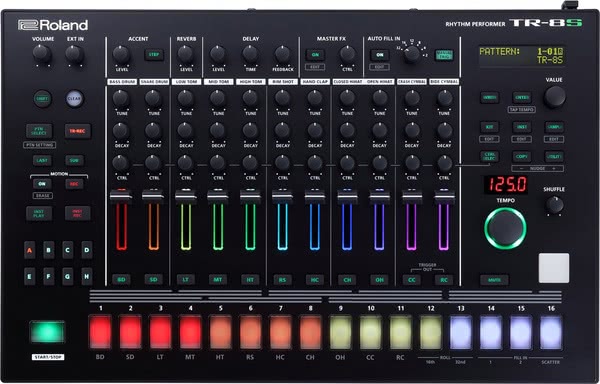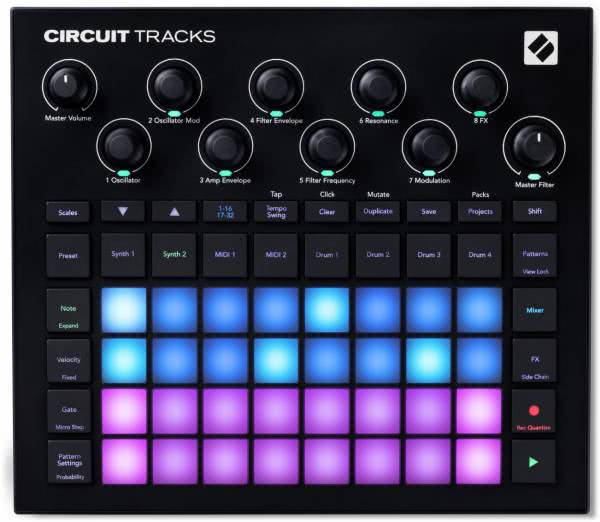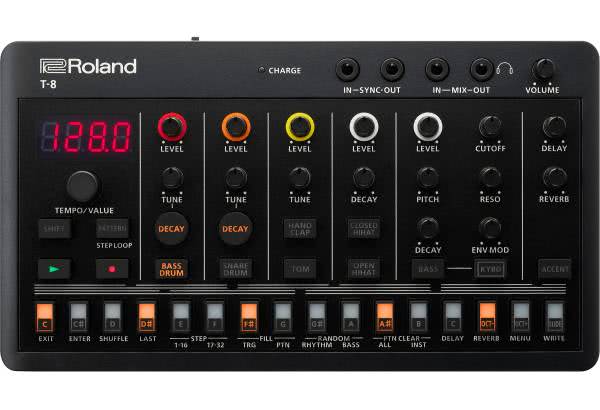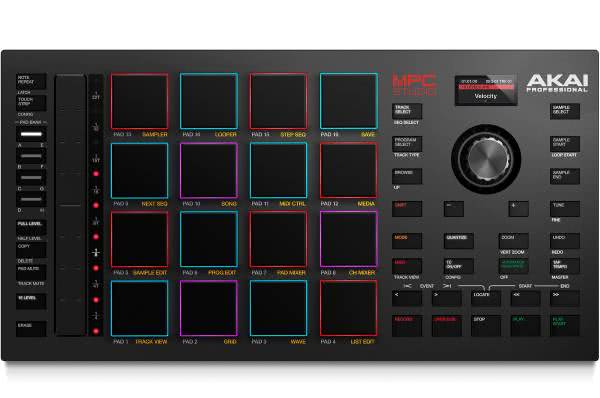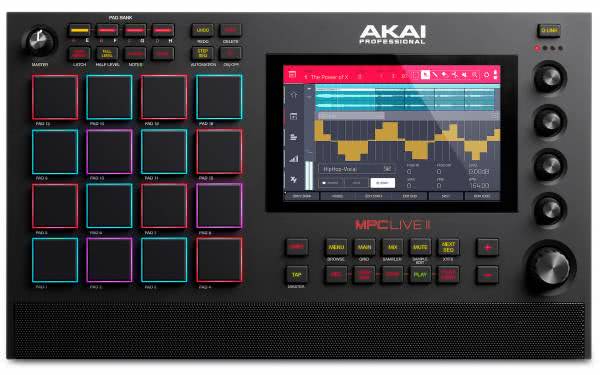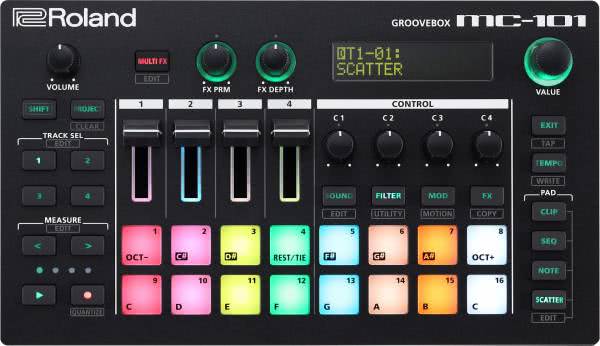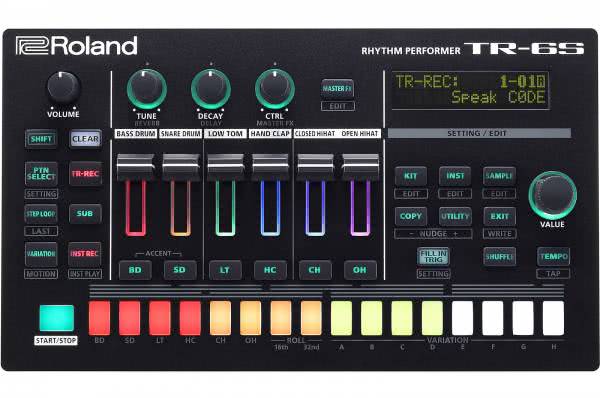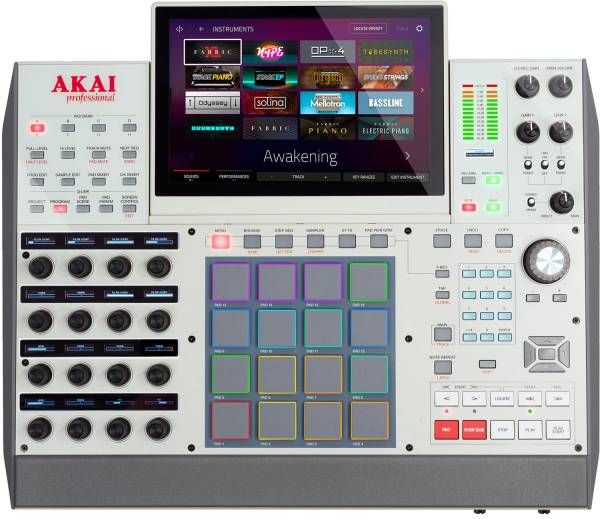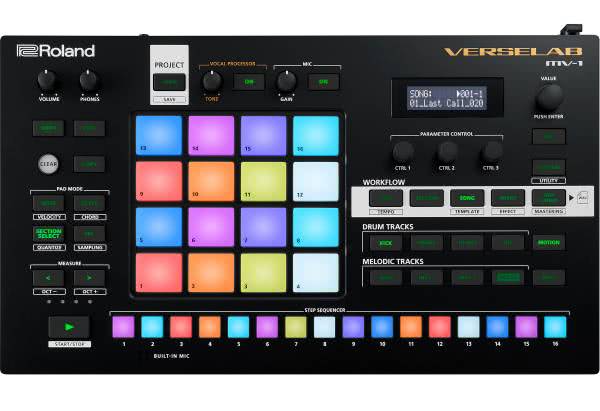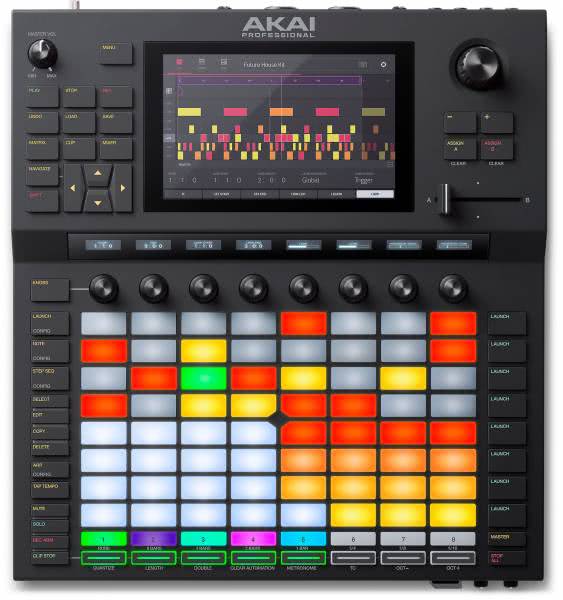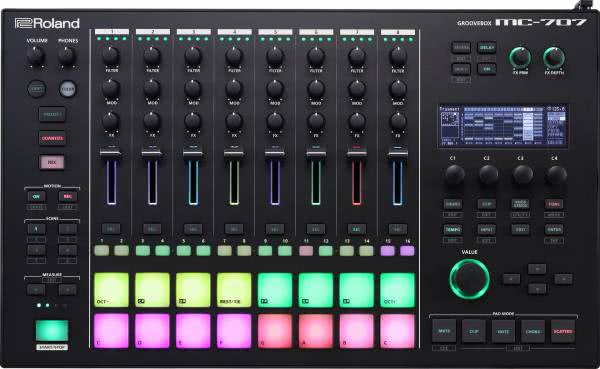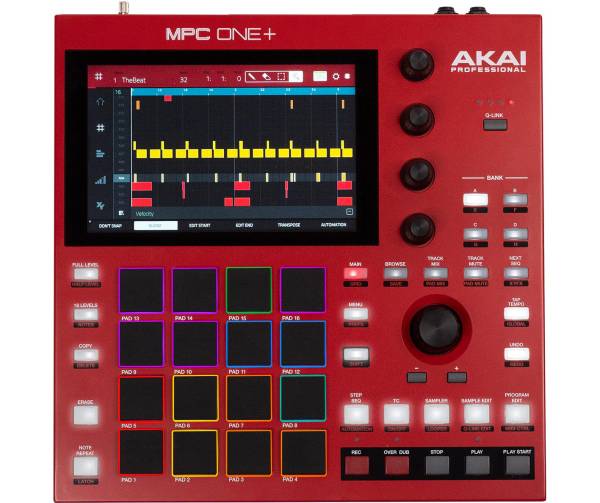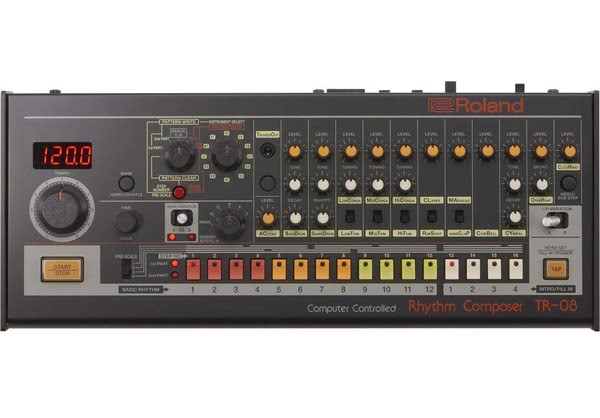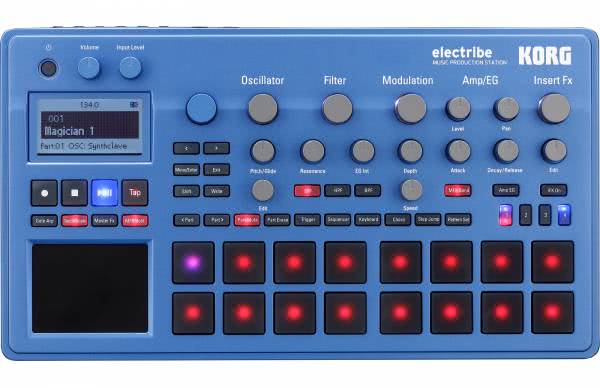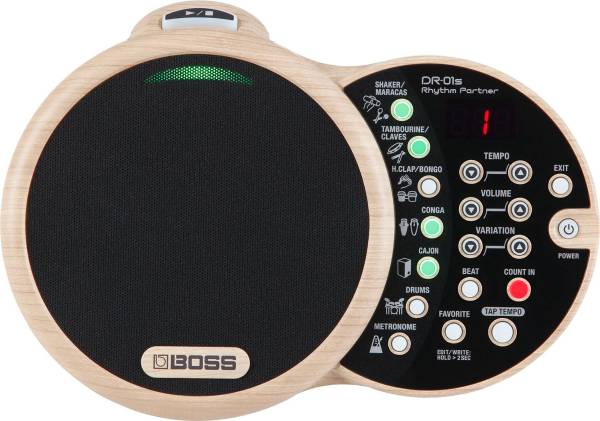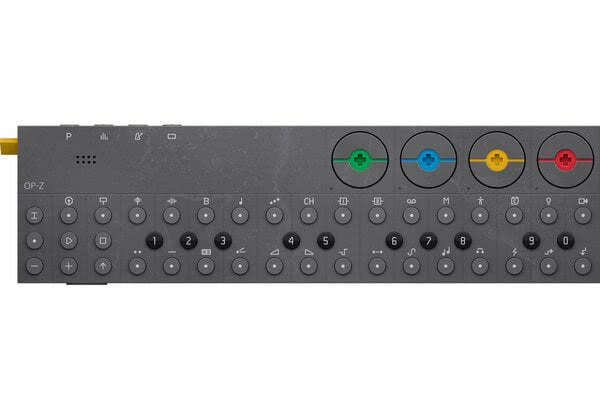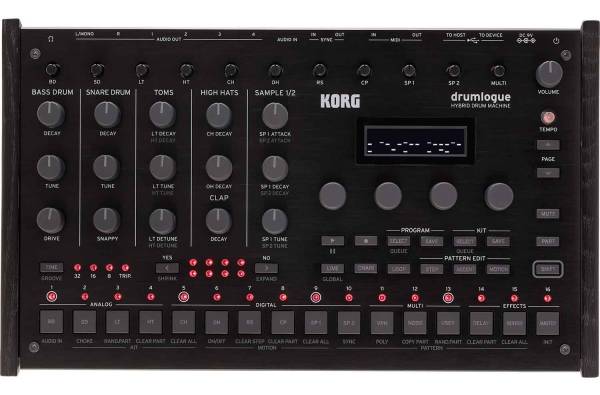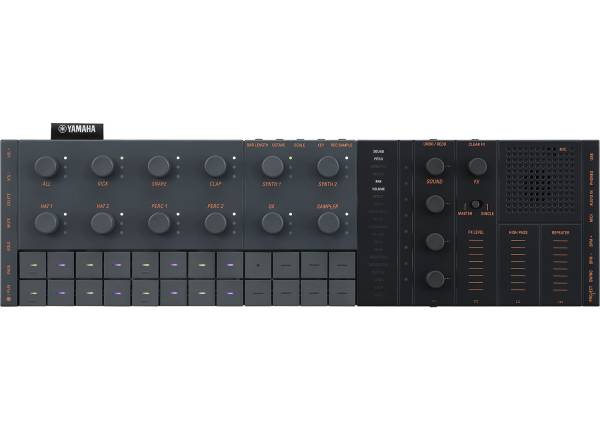What is a Groovebox?
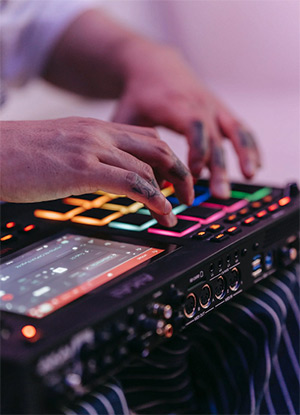
Simply put, a groovebox was originally designed as an all-in-one device. A small box, with an integrated sequencer and sounds, that was quick and relatively easy to use and fun to play. The concept was first introduced by the manufacturer Roland in 1996 with the first groovebox: The Roland MC303.
The concept worked and quickly found a lot of interest. In the following years all manufacturers brought their more or less successful ideas of a groovebox to the market and a real wave flooded the market. No matter if from EMU, Yamaha, Roland or Korg. Each device had its pros and cons, but they all had something in common: they brought fast and sonically decent music fun.
The boom in the 2000s
Spurred on by the success Korg has achieved with his MC series, every manufacturer who was a big name in the industry was now producing grooveboxes - and everyone was trying to outdo the competition with new ideas and features.
So the boxes were littered with numerous innovations and extensions such as
- Sampler functionality
- MPC style velocity sensitive pads
- Highly extended effect sections
- Possibilities to extend the internal sound generation with Rom sound chips
- Scratch emulations
- Increase of the polyphony up to 128 voices
- Sophisticated sequencers and operating concepts
and many more points found their way into the different boxes. Every manufacturer often had a "special" feature that was not found in any other groovebox and so you had to adapt to a model and deal with its advantages and disadvantages.
 The well-known E-Mu Command Station, for example, makes a sampler urgently miss, but can score with 128 voices and sophisticated synthesis functions and many expansion slots.
The well-known E-Mu Command Station, for example, makes a sampler urgently miss, but can score with 128 voices and sophisticated synthesis functions and many expansion slots.
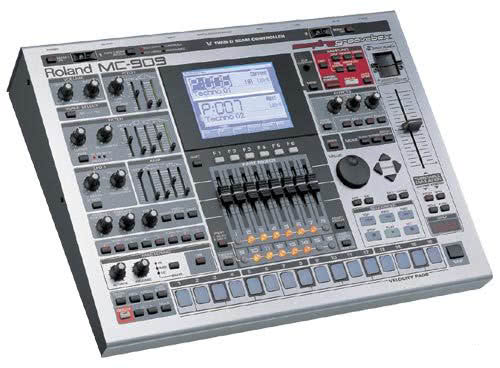 A Roland MC-909 had a large display, a sampler and a good sequencer - unfortunately only one expansion card could be plugged in for new sounds.
A Roland MC-909 had a large display, a sampler and a good sequencer - unfortunately only one expansion card could be plugged in for new sounds.
 The Yamaha RS-7000 had a sampler and good factory sounds, but no velocity-sensitive pads or expansion slots. It led a niche existence, although the groovebox was one of the best equipped.
The Yamaha RS-7000 had a sampler and good factory sounds, but no velocity-sensitive pads or expansion slots. It led a niche existence, although the groovebox was one of the best equipped.
Perhaps the somewhat more complicated operating concept and the high price did not convince everyone.
But these were all known shortcomings and if anything, whining on a high level. Groovy music could be elicited from all these boxes, and so in the end it wasn't the above-mentioned shortcomings that put an end to the "classic" grooveboxes, but simply the time-dated sounds, lack of effect and processing power. The possibilities at the computer had simply become better, faster, easier and cheaper
The Groovebox in 2022
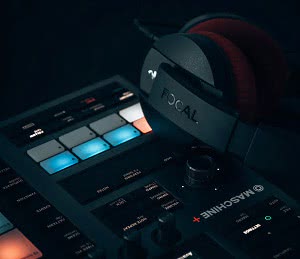 After the turn of the millennium and with the increasing potency of CPUs, the hardware in both large and small studios was increasingly replaced by software. Or mostly a combination of hardware, which should be seamlessly integrated into the software.
After the turn of the millennium and with the increasing potency of CPUs, the hardware in both large and small studios was increasingly replaced by software. Or mostly a combination of hardware, which should be seamlessly integrated into the software.
As a result, the demand for grooveboxes as pure hardware solutions has also declined and manufacturers have either withdrawn or launched hybrids that fuse hardware and software. The power was taken over by the computer, but the feeling of hardware was still guaranteed by the use of a dedicated, perfectly tuned midi controller. Best example: The Native Instruments Machine.
This machine has successfully combined both sides into a round package and is still very successful in 2022.
But there is also a manufacturer who still offers "real" standalone grooveboxes: Korg with its electribe series.
These boxes have been built in the same way for almost 2 decades and only improved in details and still offer the real feeling of a groovebox. But even under the hood, the comfort has been raised into the new decade. SD cards have been introduced and instead of recording several outputs in analog mode, they are now exported directly to Ableton.
What should a good groovebox be capable of?
The days of cutting corners are over thanks to increased CPU power and cheaper components. The following things should be included in a well-equipped groovebox:
- Sequencer functions: A groovebox should have a sequencer that allows the user to program and arrange sounds and rhythms. There is practically no box that cannot do this. However, the workflow of how to record sequences differs significantly between devices. A good and fast workflow is the be-all and end-all of a groove box.
- Sound generation: A groovebox should be able to generate various sounds either through synthesis or sample-based sound generation and also already have a large arsenal of sound. A good groovebox can also be expanded with new sounds
- Effects: A groovebox should have a range of effects that can be applied to the sounds to alter and refine them. These can include reverb, delay, chorus, flanger and other effects
- MIDI support: most grooveboxes can record and play back MIDI data, allowing them to communicate and synchronize with other MIDI-capable devices. You can tell a good groovebox by how extensively MIDI integration has been implented.
- Pads: Most boxes have pads or keys that allow the user to play melodies and harmonies. Above all, look for easy-to-play, velocity-sensitive pads that are RGB-lit
- Connections: A good groovebox should have a large number of outputs so that you can record the mix in multiple tracks simultaneously. Alternatively, an audio interface should be available or an export function of the individual tracks.
- Display: A groovebox should have one or more displays that show the user important information such as the current sequence, the sounds played and effects. The larger. the more pleasant it usually is to work with. Touchscreens have now also arrived in grooveboxes, but are still rarely used.
Which groovebox is the right one for me?
 That depends on the use and preferences. If you are looking for a groovebox with your own sounds for fast sequencing fun, you should go for the Korg electribe series.
That depends on the use and preferences. If you are looking for a groovebox with your own sounds for fast sequencing fun, you should go for the Korg electribe series.
These have always been available in 2 different versions. The "normal" version is designed as a synthesizer and is called "electribe 2", a short "S" behind the name stands for the sampler version. Basically the same machine, but samples can be loaded into the device at will.
 Roland is really serious with his new Groovebox series. With the Roland MC-101 and the MC-707, the manufacturer has again brought a classic groovebox to the market in 2019, which works completely standalone.
Roland is really serious with his new Groovebox series. With the Roland MC-101 and the MC-707, the manufacturer has again brought a classic groovebox to the market in 2019, which works completely standalone.
On 4 or 8 tracks you can put together tracks to your heart's content. Everything you need is on board: samplers, good sounding effects and more than 3000! Sounds from Roland's legendary sound pool.
 If you don't have a problem with not working standalone, either the Native Instruments machine or Ableton Push is a good choice.
If you don't have a problem with not working standalone, either the Native Instruments machine or Ableton Push is a good choice.
Both are complex controllers that work well in their DAW environment and allow you to produce music on a professional level.
 A somewhat special device is the OP-Z from Teenage Engineering. This little mini box is a full-fledged workstation in a really small pocket size with several integrated synthesis forms and a sampler. This device is ideal for mobile sketches or even complete pre-productions. Unfortunately the manufacturer can hardly keep up with the production. In any case an extremely interesting and intuitive machine.
A somewhat special device is the OP-Z from Teenage Engineering. This little mini box is a full-fledged workstation in a really small pocket size with several integrated synthesis forms and a sampler. This device is ideal for mobile sketches or even complete pre-productions. Unfortunately the manufacturer can hardly keep up with the production. In any case an extremely interesting and intuitive machine.
With each of these solutions complete beats and songs can be created on a professional level. It always just depends on which creative head is sitting in front of the machine. Maybe you?

